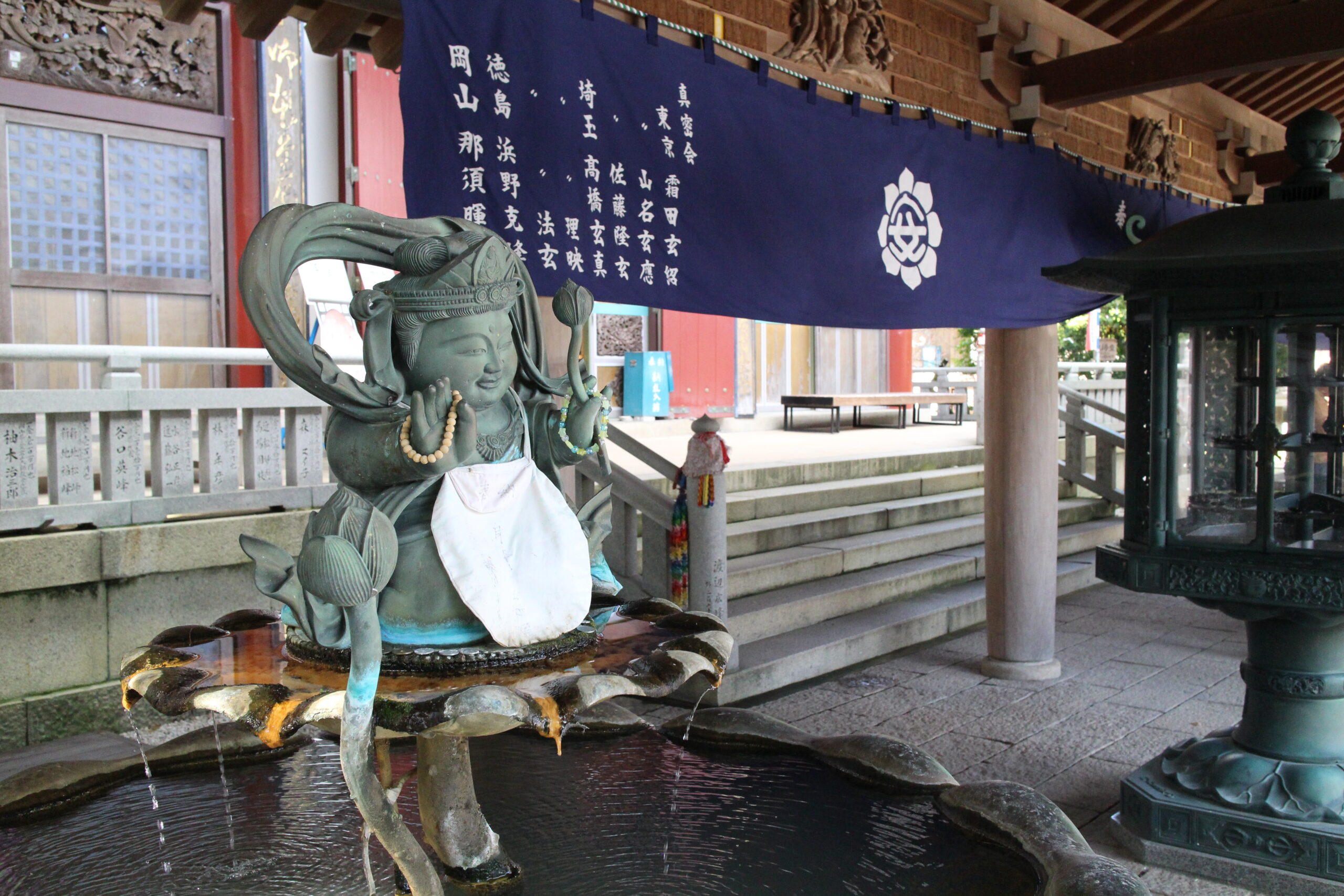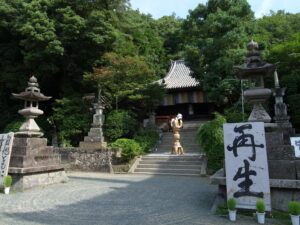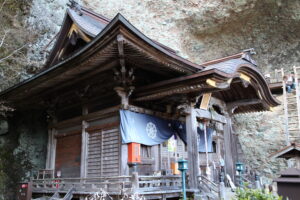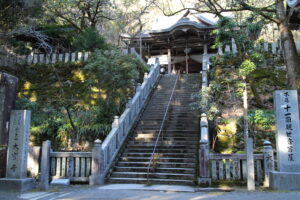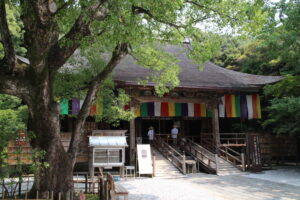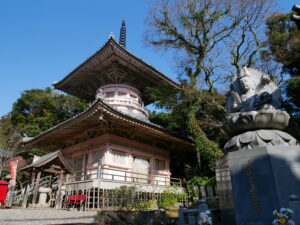Anraku-ji, Temple 6 of the Shikoku Pilgrimage, is the most common place to stay for pilgrims finishing their first day of walking. Known for its healing hot-spring waters and moving evening service, it’s the perfect place to unwind and immerse yourself deeper in the traditions of the Henro.
Anraku-ji’s Origins and History
Legend has it that while traveling through Shikoku, Kukai discovered that the area around Anraku-ji was rich in hot springs. He taught locals about the health benefits of bathing in the springs, and carved an image of Yakushi Nyorai, the Medicine Buddha, enshrining it in the hall that would later become Anraku-ji temple. The temple was burned by the warlord Chosokabe Motochika in his conquest of Shikoku, and was rebuilt some distance from its original site in the 17th Century. Because of its important position at the end of a day’s walk from Temple One, Ryozen-ji, the local lord funded the construction of the first official Shukubo, or Temple Lodging, on the Henro. Though many of Shikoku’s shukubo have closed in recent years, Anraku-ji’s priests are committed to keeping the tradition alive at their temple. Check out the Japan National Tourism Board website for more information about the unique culture around hot springs in Japan.
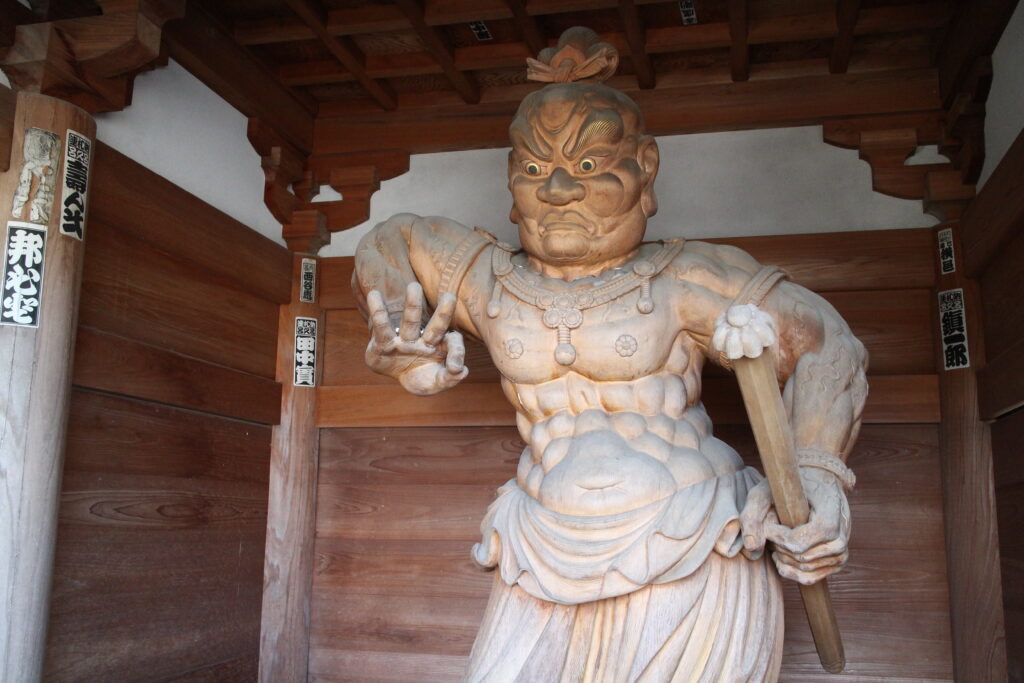
What to See at Anraku-ji
Anraku-ji lies tucked away in a village in the Yoshino River Valley. Its gate is guarded by sensitively-carved sculptures crafted by the renowned contemporary Buddhist sculptor Matsumoto Myokei, whose distinctive works are spread throughout the temple. Passing through the gate, a long courtyard flanked by a gorgeous pagoda surrounded by a garden on the left, and the shukubo (temple accommodation) on the right, leads up to the main hall. While the carvings on the eaves of the temple may look traditional at a glance, these recent carvings illustrate the story of the Shikoku Pilgrimage, from the birth of Kukai right up to modern modes of transportation. The interior of the temple is richly decorated with painted columns and carvings. Visitors who stay in the temple’s shukubo have the opportunity to participate in a moving Buddhist ceremony after dinner, during which they can see, and even touch, the many amazing works of religious art that make Anraku-ji a must-visit stop for pilgrims and tourists alike.Discover more about the history and tradition of shukubo (temple lodging) at Japan Guide’s page on Temple Lodging.

Stay at Anraku-ji with Shikoku Tours
End your first day of pilgrimage in comfort and reflection at Anraku-ji. With its hot springs, moving evening ceremony, and historic temple lodging, it’s a highlight of the journey. Book with Shikoku Tours and we’ll handle every detail — so you can focus on the path ahead.Discover more about the Yoshino Region’s charms at the Tokushima Prefecture Tourism website.

